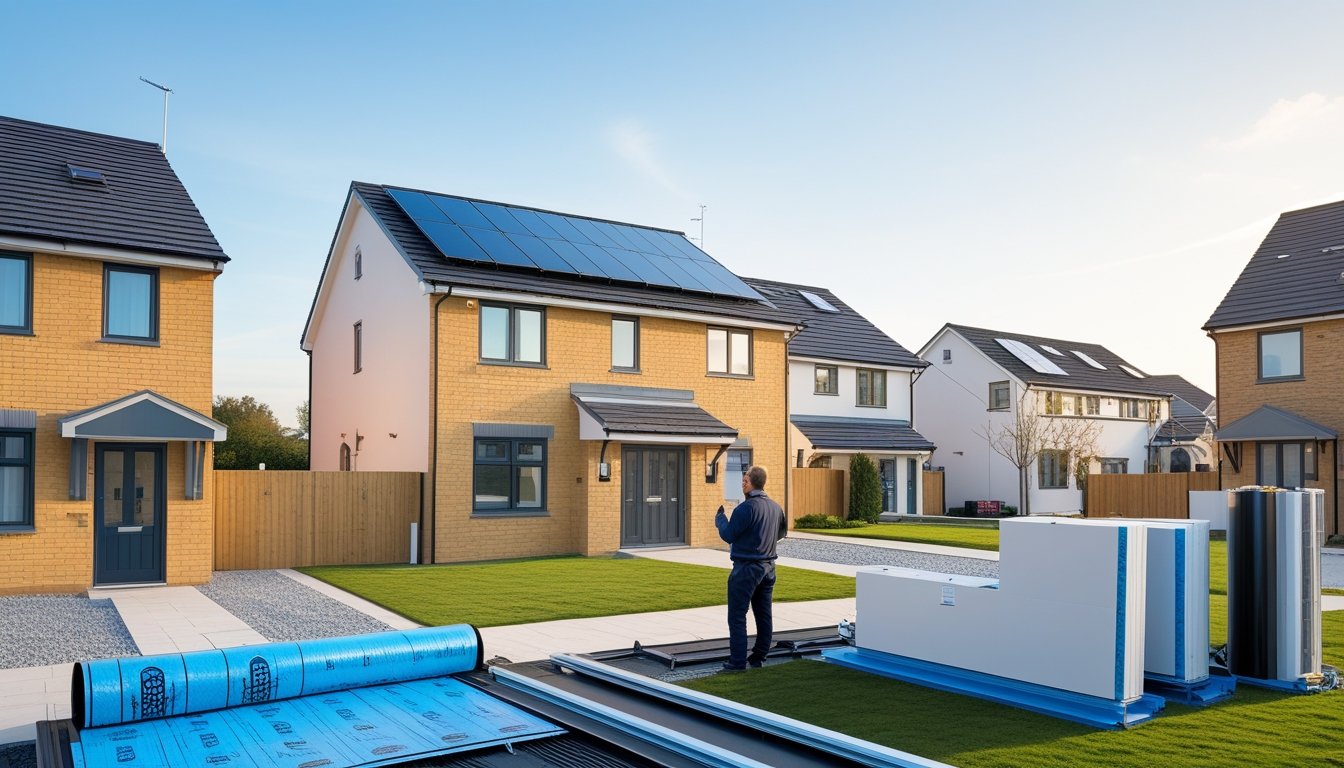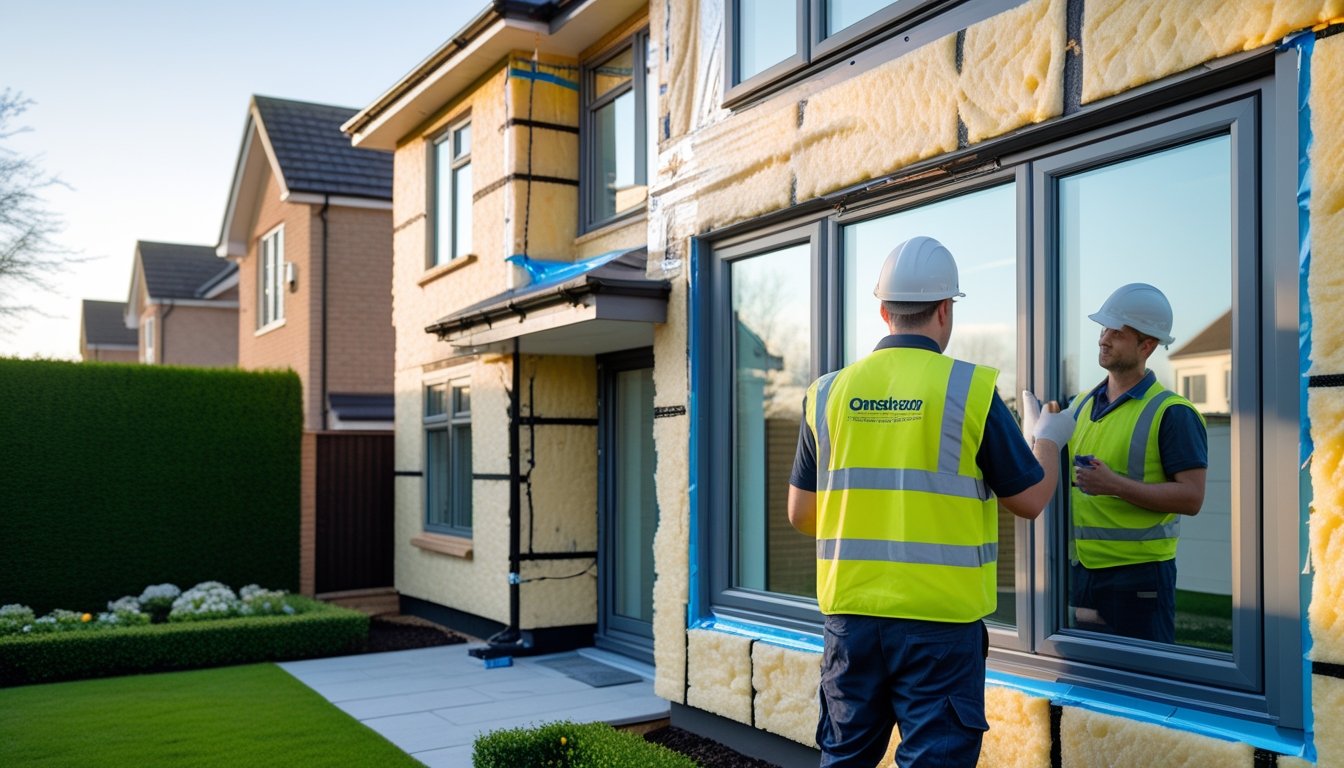Late updated: 24 May 2025 11:05
Written by: Eleanor Hartman
Innovative Approaches To Reducing Heat Loss In UK Homes: Unleashing Energy Efficiency
Reducing heat loss in UK homes is becoming an essential aspect as we aim towards lower energy consumption and sustainable living. Innovative approaches such as modern insulation techniques, air sealing, and advanced glazing are effective measures to minimise energy loss. The evolution of home heating technology offers exciting prospects for homeowners seeking to reduce their carbon footprint and significant savings on energy bills.

Exploring these cutting-edge solutions not only helps us address the challenges of climate change but also enhances the comfort within our homes. As we transition to greener energy, understanding these innovative methods is key to making informed decisions for a more energy-efficient household. We’ll uncover practical strategies that can be easily integrated into existing homes and explore the horizons of emerging technologies in this exciting field.
Key Takeaways
- Innovative methods are crucial for reducing heat loss and enhancing energy efficiency.
- Modern techniques like advanced insulation and glazing play a significant role.
- Emerging technologies promise a sustainable and cost-saving future.
Innovative Methods for Reducing Heat Loss in UK Homes
In order to prevent heat loss and minimise energy consumption, it's essential to focus on advanced insulation technologies, modern draught proofing approaches, revolutionary window improvements, and smart home systems. These strategies not only enhance comfort but also contribute to reducing the carbon footprint of our homes.
Advanced Home Insulation Technologies
Insulation technology has evolved significantly, providing powerful tools to combat heat loss. Cavity wall and loft insulation are effective traditional methods, but solid wall insulation now offers substantial benefits in older UK homes without cavities. Modern materials like aerogel and vacuum insulated panels provide superior insulation, reducing the need for heating.
Floor insulation is another critical area often overlooked. We must also consider roof insulation, where significant heat can escape. Enhanced insulation contributes to a more energy-efficient home, leading to reduced utility bills and improved warmth during winter months.
Next-Generation Draught Proofing Solutions
Draughts can significantly undermined heating efforts, and modern solutions are essential for airtight homes. Upgraded draught proofing techniques use innovative products like silicone-based weather stripping and magnetic seals for doors and windows. These solutions provide better seals than traditional methods.
Effective draught proofing drastically reduces unwanted air flow, allowing us to maintain stable indoor temperatures. Options such as automated draught excluders offer tailored solutions for specific household needs. This ensures that draught-proofing contributes to both comfort and energy efficiency.
Cutting-Edge Window and Glazing Improvements
Windows are a common source of heat loss, but advancements in glazing have transformed this area. Double glazing is now standard, with options like triple glazing offering even greater thermal efficiency. Low-emissivity (Low-E) coatings reduce heat transfer, keeping warmth inside during cold months.
Introducing vacuum-insulated glazing can make a substantial difference in homes where window upgrades are necessary. These improvements mean we can enjoy a warmer environment without compromising on natural light. Positioning windows to maximise sunlight further enhances home energy efficiency.
Smart Heating and Monitoring Systems
Smart thermostats and meters offer precise control over home heating. Devices like the smart thermostat not only regulate temperatures but also track usage patterns to optimise energy consumption. Integrated systems can adjust heating based on occupancy or outdoor temperatures, improving efficiency.
Smart meters allow us to monitor real-time energy usage, encouraging conscious energy practices. By using such technology, we can reduce carbon emissions by heating only when and where necessary. An effective combination of these innovations ensures our homes remain comfortable and environmentally friendly.
Emerging Technologies and Future Trends

As we explore the challenges of reducing heat loss in UK homes, the focus remains on integrating new technologies that offer efficient solutions. Key areas of interest include the increased use of heat pumps, advancing solar energy systems, and smart energy management tools.
The Role of Heat Pumps in Modern UK Homes
Heat pumps have become a fundamental part of modern heating systems, offering both air-source and ground-source options to efficiently warm homes. By extracting heat from natural sources, they provide a low-carbon alternative to traditional heating. Recent advancements have improved their effectiveness in colder climates, making them a practical choice for the UK. Ground-source heat pumps are particularly effective, providing consistent heat by tapping into stable temperatures underground.
The installation of these systems often comes with government incentives, reducing initial costs. Through schemes such as the Renewable Heat Incentive, homeowners can significantly lower energy bills by adopting heat pump technology. Ventilation systems can also be optimised to work in tandem with heat pumps, maintaining consistent airflow and temperature.
Integration of Solar Panels and Renewable Energy
The integration of solar panels with existing home energy systems has gained momentum across the UK. This development aligns with the broader push for renewable energy solutions. Solar panels not only provide a sustainable energy source but work effectively alongside the Smart Export Guarantee, which credits homeowners for excess energy fed back into the grid.
E.ON UK and other energy providers support this transition by offering packages that combine solar technologies with traditional power services. This combination can significantly reduce energy costs while promoting sustainable living. Advances in solar technology have also enhanced the efficiency of energy capture and storage, allowing homeowners to maximise their solar investment year-round.
Intelligent Home Energy Management
Intelligent home energy management systems represent a promising trend in reducing energy consumption. These systems use data analytics to monitor and optimise household energy use in real-time. Smart home technologies enable us to control heating systems remotely, ensuring energy isn't wasted.
By integrating these systems with existing technologies like heat pumps and solar panels, homeowners can further save energy. Automated systems can adapt to daily routines, adjusting heating and cooling settings based on occupancy and weather patterns. Such innovations not only improve comfort but also aid in cutting down energy bills, aligning with broader goals of efficiency and sustainability.
Frequently Asked Questions

Innovative approaches for reducing heat loss in UK homes encompass a variety of methods. These include effective insulation techniques, government assistance programmes, practical home improvements, and heat loss surveys to cut heating bills.
What are the most effective methods for insulating existing homes in the UK?
To insulate existing homes, we suggest installing double-glazed windows and adding loft and cavity wall insulation. Draught-proofing around doors and windows also proves beneficial. By sealing gaps, we can prevent unnecessary heat loss, thereby enhancing the overall energy efficiency of a home.
What government schemes are available to assist with home insulation?
In the UK, there are several government schemes aimed at promoting energy efficiency. Programmes such as the Energy Company Obligation (ECO) provide funding for insulation improvements. We encourage homeowners to explore these opportunities to reduce their energy expenses.
How can heat loss surveys contribute to reducing heating bills in UK households?
Heat loss surveys identify the specific areas where energy is wasted. These surveys guide us in implementing targeted measures to minimise heat loss, ultimately lowering heating bills. Recognising areas of inefficiency allows us to make informed decisions on where to invest in home improvements.
What cost-effective techniques can be utilised to insulate a house more efficiently?
Cost-effective insulation techniques include using thermal curtains and draught excluders on doors. We can also apply reflective foil to walls to enhance thermal retention. Such methods are not only affordable but can also significantly boost a home's warmth and comfort.
In what ways can a UK homeowner improve their home's energy efficiency?
Improving energy efficiency involves upgrading to energy-efficient appliances and installing smart thermostats. These adjustments allow us to optimise energy consumption. Additionally, homeowners may consider switching to renewable energy sources to further diminish their carbon footprint.
What practical steps can be taken to minimise thermal energy transfer in domestic properties?
Practical steps include sealing any air leaks and ensuring that walls are sufficiently insulated. Adding insulation to attics and floors further reduces thermal transfer. As a result, we can maintain a stable indoor temperature, reducing the need for excessive heating.